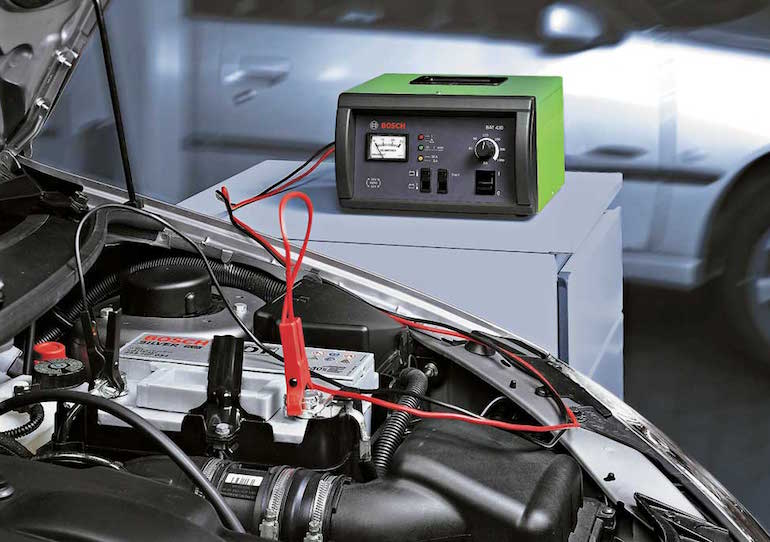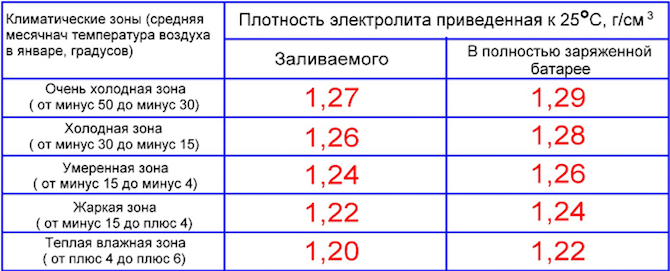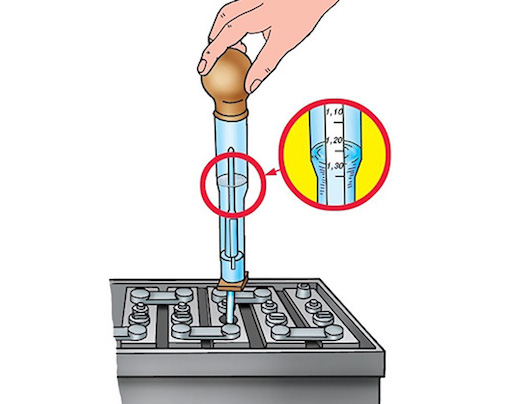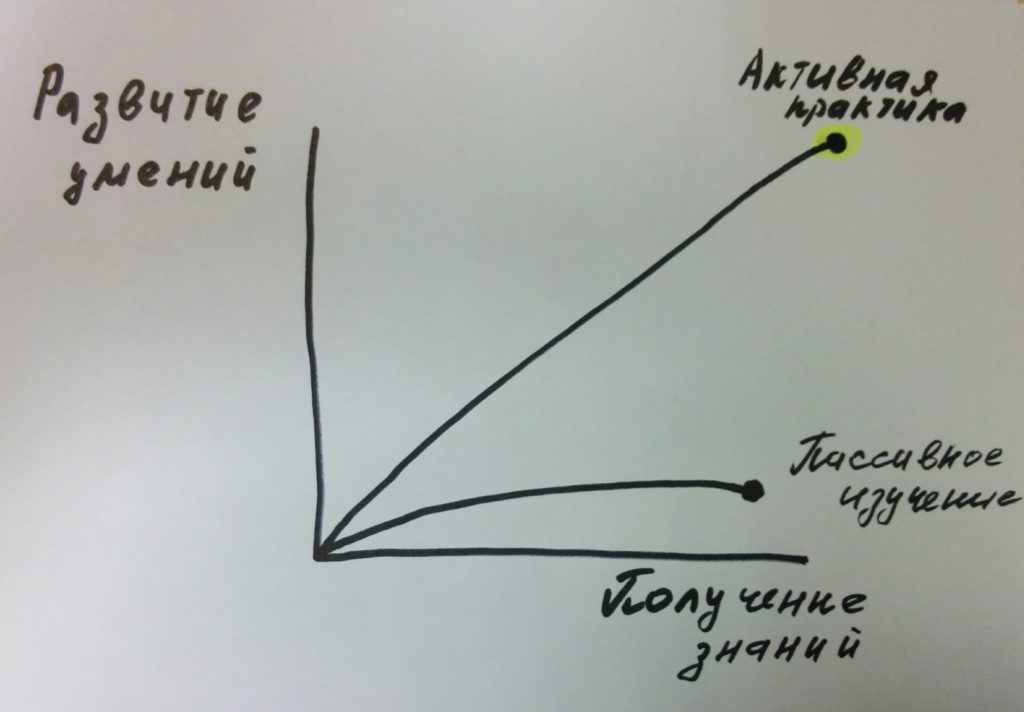
The density of the electrolyte in the battery - in winter and summer: table
Most of the batteries sold in Russia are semi-serviceable. This means that the owner can unscrew the plugs, check the level and density of the electrolyte and, if necessary, add distilled water inside. All acid batteries are usually 80 percent charged when they first go on sale. When buying, make sure that the seller performs a pre-sale check, one of the points of which is to check the density of the electrolyte in each of the cans.
In today's article on our Vodi.su portal, we will consider the concept of electrolyte density: what it is, what it should be like in winter and summer, how to increase it.
In acid batteries, a solution of H2SO4, that is, sulfuric acid, is used as an electrolyte. Density is directly related to the percentage of solution - the more sulfur, the higher it is. Another important factor is the temperature of the electrolyte itself and the ambient air. In winter, the density should be higher than in summer. If it falls to a critical level, then the electrolyte will simply freeze with all the ensuing consequences.

This indicator is measured in grams per cubic centimeter - g / cm3. It is measured using a simple hydrometer device, which is a glass flask with a pear at the end and a float with a scale in the middle. When buying a new battery, the seller is obliged to measure the density, it should be, depending on the geographical and climatic zone, 1,20-1,28 g / cm3. The difference between banks is not more than 0,01 g/cm3. If the difference is greater, this indicates a possible short circuit in one of the cells. If the density is equally low in all banks, this indicates both a complete discharge of the battery and sulfation of the plates.
In addition to measuring the density, the seller should also check how the battery holds the load. To do this, use a load fork. Ideally, the voltage should drop from 12 to nine volts and stay at this mark for a while. If it falls faster, and the electrolyte in one of the cans boils and releases steam, then you should refuse to buy this battery.
Density in winter and summer
In more detail, this parameter for your specific battery model should be studied in the warranty card. Special tables have been created for various temperatures at which the electrolyte can freeze. Thus, at a density of 1,09 g/cm3, freezing occurs at -7°C. For the conditions of the north, the density should exceed 1,28-1,29 g / cm3, because with this indicator, its freezing temperature is -66 ° C.
Density is usually indicated for an air temperature of + 25 ° C. It should be for a fully charged battery:
- 1,29 g/cm3 - for temperatures ranging from -30 to -50°C;
- 1,28 - at -15-30 ° C;
- 1,27 - at -4-15 ° C;
- 1,24-1,26 - at higher temperatures.
Thus, if you operate a car in the summer in the geographic latitudes of Moscow or St. Petersburg, the density can be in the range of 1,25-1,27 g / cm3. In winter, when temperatures drop below -20-30°C, the density rises to 1,28 g/cm3.

Please note that it is not necessary to “increase” it artificially. You simply continue to use your car as usual. But if the battery is quickly discharged, it makes sense to carry out diagnostics and, if necessary, put it on charge. In the event that the car stands for a long time in the cold without work, it is better to remove the battery and take it to a warm place, otherwise it will simply be discharged from a long idle time, and the electrolyte will begin to crystallize.
Practical tips for battery operation
The most basic rule to remember is that in no case should sulfuric acid be poured into the battery. Increasing the density in this way is harmful, since with an increase, chemical processes are activated, namely sulfation and corrosion, and after a year the plates will become completely rusty.
Regularly check the electrolyte level and top up with distilled water if it drops. Then the battery must either be put on charge so that the acid mixes with water, or the battery must be charged from the generator during a long trip.

If you put the car “on a joke”, that is, you don’t use it for some time, then, even if the average daily temperatures drop below zero, you need to make sure that the battery is fully charged. This minimizes the risk of freezing of the electrolyte and destruction of the lead plates.
With a decrease in the density of the electrolyte, its resistance increases, which, in fact, makes it difficult to start the engine. Therefore, before starting the engine, warm up the electrolyte by turning on headlights or other electrical equipment for a while. Do not forget to also check the condition of the terminals and clean them. Due to poor contact, the starting current is not enough to generate the required torque.


Watch this video on YouTube
Loading…
